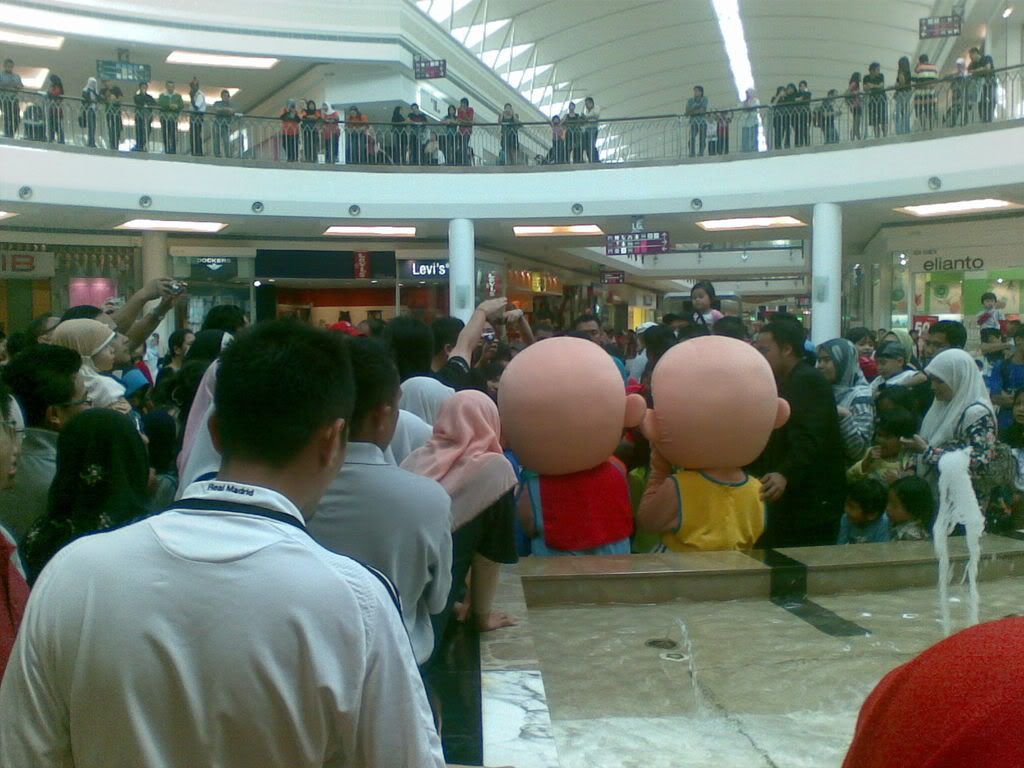
slaughters_1
-
Content Count
213 -
Joined
-
Last visited
Posts posted by slaughters_1
-
-
thanks en lanun sebab still setia dengan putera.com -

PC-BSD 7.0.2 now available!
The PC-BSD Team is pleased to announce the availability of PC-BSD 7.0.2, with an updated FreeBSD 7.1-PreRelease under the hood and the latest KDE 4.1.3.
Version 7.0.2 contains a number of bugfixes and improvements. For a full list of changes, please refer to the changelog. Some of the changes are:
* KDE 4.1.3
* Improved desktop performance with Nvidia Cards
* Improved NTFS write support
* HAL fixes and improvements
* Installation bugfixes
This version of PC-BSD can be downloaded and installed as a fresh install or, alternatively, can be updated to from PC-BSD 7.0.1 via the System Update tool or via a stand-alone PBI .
Many thanks for all the feedback we have received via the Forums and the Testing mailinglist.
download here.. http://www.pcbsd.org/content/view/21/11/ -
mahal sangat grafik kad ko tu, orang yang kaya gile je mampu beli. Haha. -
wooo
malaysian mirror tuuu..
gune maxis 3G boleh dapat 70Kbps..
aku test download dari negara lain plak aa..
hermm..
luar negara aku dapat 40Kbps...
amik masa 40jam untuk download..
kalo kat server ko, amik masa 20 jam.
esok aku try dari office aku.
waaa.. aku try dari office aku..
1% [ ] 41,642,360 4.13M/s eta 22m 8s <-- tengok, 22minit je settle..
hohoho.. tengok tu..
klao dari site luar..
0% [ ] 403,678 24.3K/s eta 2d 50h
2 hari baru abis..
btw.. backbone office aku 200mb.. so kalo nak buat comparison.. tak tau la. -
Haibara Ai wrote:hehe thanks for d wish ye zul ngan teri ::icon_cool::
aku wish kat ko, ko buat tak tau je..
aku siap sms lagi kat ko..
takpe2.. -
kl kat mane ?
minat dengan lcd tu.
nak letak kat kampung.. -
PuteriNurFarah wrote:Sila Bagi cadangan bernas..tgk tajuk thread ..hehehehe ::icon_lol:: ::icon_lol::
kene sound dengan mode.. -
nak migrate tu bukan macam nak tukar baju.. -
baru punye ek ? -
-
punye la aku semangat nak pergi..
sekali orang ramai gile2 menyerbu..
last2..
apa yang aku dapat ??
nie..
sabor je la
dengan tiket GENG pun sold out.. -
boleh tengok pasal bind kat sini..
http://www.bind9.net/
btw..The Domain Name System, or DNS, is one of the Internet's fundamental building blocks. It is the global, hierarchical, and distributed host information database that's responsible for translating names into addresses and vice versa, routing mail to its proper destination, and many other services.
(Another fundamental building block of the Internet is BGP routing, the routing protocol used to exchange routing information across the Internet. It is discussed in depth on our companion website about BGP4).
To understand what DNS does, let's take this small example. You'd like to visit a website, www.example.com.
After entering the website location, the browser has to find out the IP address of the host www.example.com. Therefore it makes a query to the local DNS resolver, which in turn queries the local DNS server. The DNS server does some more work - quickly finds out the matching IP address - and returns this answer back to the resolver.
In DNS jargon, this lookup is called a query for the "A record". This record describes the relation between a hostname and the corresponding IP address in DNS.
Your web browser is now able to contact the host www.example.com using its IP address. Further information retrieval takes place using the HTTP protocol, which is not discussed here.
Of course, the complete DNS resolving process is slightly more complicated. But finding the corresponding IP address for a hostname -or vice versa- is one of the basic tasks of DNS. The DNS protocol however has a lot more features and applications. For a complete understanding of the workings of the Domain Name System, you're encouraged to visit the DNS links section on this website.
The original DNS protocol is described in RFC 1034 and RFC 1035.
* RFC 1034 - Introduces domain style names, their use for Internet mail and host address support, and the protocols and servers used to implement domain name facilities.
* RFC 1035 - Describes the details of the domain system and protocol, and assumes that the reader is familiar with the concepts discussed in a companion RFC 1034. -
thread ni untuk ape ye.. -
ariff360 wrote:betolll...mac xdetect virus...n xbayak masalah....
ape maksud mac tak detect virus ?
ape kebenda virus tu ?
ape kebenda mac tu ? -
aku dulu minat engineering..
tapi tak tau a nape..
haha. -
ethtool ethX = nak tengok eth setting.
ethtool -s duplex full speed 1000 autoneg off = nak set ethtool.
date -s "12:12:12" = nak set jam manually
ntpdate jaring.my = set jam ikut jam pada jaring ntp server.
hwclock = nak tengok jam hardware.
hwclock -w = untuk samakan jam hardware dengan jam system( hardware follow system ) -
buat masa ini..
du -sh * | more
btw..
don't ever think smart by saying that your favorite command is rm -rf /* -
btw, aku rasa ni memang murah..
user putera kalo rasa nak ade site sendiri, boleh la register dengan diorang nie.. -
17 tahun ?
mental ?
uikh.. -
aiseh, cuba dulu, dok kalau2, sampai bile2 pun tak tau..
btw, da download belum centos ?
ehhe.. nanti putera akan host gak satu mirror centos. -
banyak lagi kene belajar nie.. -
yes princess..
ok camnie..
korang pernah dengar tak jalan masuk ke rumah mawi JEM samapi bebelas kilometer semata2 nak pergi tengok mawi kawin ? sebab ape jem ? sebab jalan kecik, ade 2 lane, pergi balik..
Tapi, adakah tiap2 hari jalan tu jem ? tak kan ? sebab, mawi bukan kawin hari2, so maknanya jalan kampung menuju ke rumah mawi akan jem kalau ade majlis yang mawi anjurkan..
Contoh perbandingan lain...
Ada sebuah kampung ( kompeni webhosting ) dan ade sebatang jalan 4 lane, 2 pergi 2 balik. menuju ke sebuah bandar ( bandar ni mewakili ISP, JARING or TM etc ).
Penduduk kampung ialah Putera.com ( server ).
Tibe2 ade orang nak attack putera.com ( DDOS/tsunami ), cara serangan ialah, die carik kat mane putera.com ni tinggal, then hantar orang ramai2 serbu ke kampung itu.
jalan terus jadik jem.. orang kampung sendiri yang asal duduk kat situ pun susah nak keluar masuk. disebabkan ramai sangat orang dari luar masuk dan keluar..
ok, camtu la jadiknya putera.com nie..
even pinda ke mane2 pun, diorang still dapat carik. sebab die pandai carik kat mane putera.com ni tinggal...
ok, katakan ade pak gat yang jaga kampung (firewall)
tapi, die tetap sesak, sebab, yang beratur depan firewall tu da penuh.. ( flood ) banjir depan firewall..
da tentu rumah putera.com takde effect ape2. sebab tersekat oleh firewall..
dan, ianya menjadikan, user sah putera.com sendiri pun tak boleh nak access ke putera.com, malah, penduduk sekampung pun tak boleh nak ulang alik, disebabkan traffik nie..
penduduk kampung lain bermaknya, user hosting lain, contoh google kalo die ade host kat situ..
camtu laaaaa..
agak2 faham ke tak ? -
ceh, aku gune paint je tuu..
ko aku mintak tolong buat, buat tak tau je.. layan awek je memanjang.. hampeh..
hahahaha.. -
gud luck princess

opensource.putera.com
in Linux & *nix
Posted · Report reply
lagi nak SAN ?
hehe.. thanks for the idea.